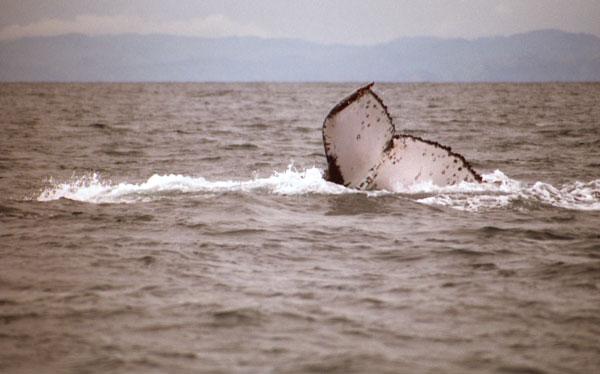The Greatest Migration on Earth


It was the greatest example of migration by a mammal on Earth — a journey made by a humpback whale across nearly a quarter of the planet. Luckily, with the help of the Internet, scientists managed to capture it on camera.
Humpback whales (Megaptera novaeangliae) regularly travel roughly 3,000 miles (5,000km) between their feeding grounds in colder areas and breeding grounds in warmer climes. However, a record-breaking female humpback from a breeding ground in Brazil was recently discovered in a breeding ground off the east coast of Madagascar. These areas are separated by at least 6,090 miles (9,800 km) — twice as far as the whales usually migrate, and the longest documented migration by any mammal ever.
In comparison, the longest migration made by a land mammal is that of the caribou, which can travel 3,000 miles annually.
The longest migration made by a bird is that of the Alaskan bar-tailed godwit (Limosa lapponica baueri), which apparently makes its eight-day, 6,835-mile autumn migration (11,000 km) from Alaska to New Zealand in one step, with no stopovers to rest or refuel.
The record-setting whale was first identified off the coast of Brazil by distinctive natural markings on her tail flukes in 1999, marks as unique to each whale as fingerprints are for humans. A skin sample taken by researchers revealed the leviathan was female.
Then, in 2001, "a birdwatcher from Norway, Freddy Johansen, took a whale-watching trip while vacationing in Madagascar," said researcher Peter Stevick, a marine ecologist at the College of the Atlantic, in Bar Harbor, Me. "Last winter he decided to put his trip photos up on the Internet."
A research associate, Gale McCullough, regularly combs through Flickr, a photo-sharing website, for photos tagged as humpback whales.
Get the world’s most fascinating discoveries delivered straight to your inbox.
"If these are fluke photos, she invites the photographer to collaborate on our project," Stevick explained. "If they are from unusual areas, she then compares them to the other individuals in our collection. She did this with the photo from Madagascar and found that it had been photographed before, but in a very unexpected place." The researchers detailed their findings online Oct. 13 in the journal Biology Letters.
Unusual journey
Humpbacks normally do not stray on their adventures, typically only going north to south and back. The fact that a female made this particular journey was especially unusual, since it is usually the males that go wandering long distances to look for mates. Moreover, "there are only a handful of cases on record documenting humpback whales moving from one breeding ground to another, most covering less than half this distance," Stevick said.
As to why this whale made this journey, "we cannot know what motivates an animal, but occasionally exploring new habitat is something that animals must do if they are to adapt to changing conditions and to their own and other populations," Stevick told OurAmazingPlanet. "She may well represent an extreme case of this type of exploration."
Photos of new whales the researchers gather from the Internet must each be compared to 3,000 other whales the researchers know from the Southern Hemisphere.
"This is a long, tedious and time-consuming process, but it is the only way to make discoveries like this," Stevick explained. "Use of the Flickr site is growing, but still only a few dozen whales come in through that route every year. The important point is that these are often from places that are otherwise not well-documented."
A better understanding of where humpbacks are and where they go could help in efforts to conserve them. This project "is, in many ways, more an idea than a set of photographs," Stevick said. "It is about sharing data to answer the really large-scale questions. The story of this one whale comes from just two sets of photographs, but it is built on the work of hundreds of researchers, photographers and tourists who pooled thousands of their photographs to make it possible for this story to emerge."
- Top 10 Most Incredible Animal Journeys
- Image Gallery — Quest for Survival: Incredible Animal Migrations
- Great Migrations Thrill, Shock at NYC Premiere
This article was provided by OurAmazingPlanet, a sister site to LiveScience.



